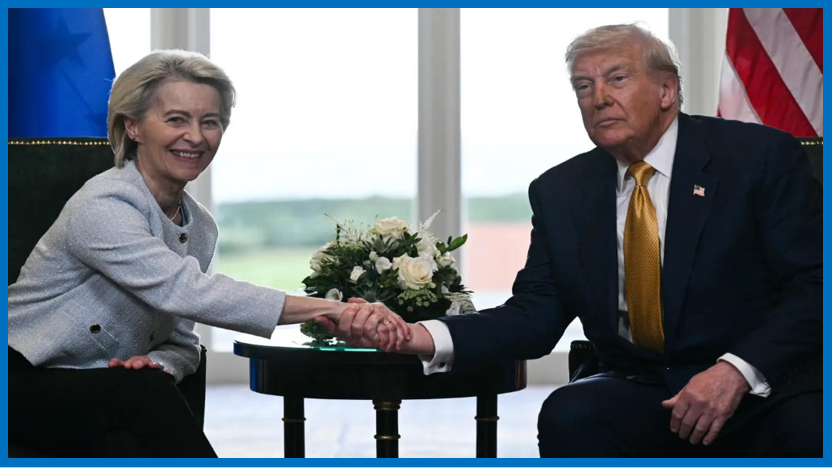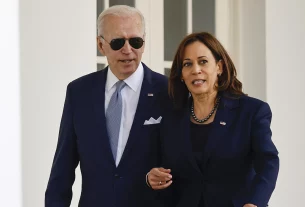On July 27, 2025, President Donald Trump and European Commission President Ursula von der Leyen announced a landmark trade agreement between the United States and the European Union. The deal, reached during a high-stakes meeting in Turnberry, Scotland, averts a looming trade war and reshapes the transatlantic economic relationship.
📜 Core Provisions of the Agreement
- 15% Tariff Framework: The U.S. will impose a uniform 15% tariff on most EU imports, including automobiles, pharmaceuticals, and semiconductors. This replaces the previously threatened 30% rate.
- $600 Billion EU Investment in the U.S.: The EU has committed to injecting $600 billion into the American economy, though specific sectors and timelines remain to be clarified.
- $750 Billion in U.S. Energy Purchases: European nations will purchase $750 billion worth of American energy products, including natural gas and renewables.
- Market Access for U.S. Exports: The EU will open its markets to a broader range of American goods, including agricultural products and military equipment, with zero tariffs on select strategic items.
🇪🇺 What the EU Gains
- Stability and Predictability: EU leaders emphasized that the agreement brings clarity to businesses and investors, helping avoid disruptive tariff escalations.
- Continued Access to U.S. Markets: Despite the 15% tariff, the deal preserves access to the U.S. for key European exports, including pharmaceuticals, autos, and wine.
- Avoidance of Retaliatory Measures: The EU has shelved plans for counter-tariffs on $100 billion worth of U.S. goods, including aircraft and agricultural products.
- Strategic Exemptions: Certain sectors—such as aerospace components, critical raw materials, and select chemicals—will benefit from zero tariffs.
🔍 Remaining Uncertainties
- Steel and Aluminum Tariffs: These remain at 50%, with discussions ongoing about potential quota systems.
- Pharmaceuticals and Semiconductors: While included in the 15% tariff bracket, both sectors may face future scrutiny or additional levies.
- Implementation Timeline: The new tariff rates are set to take effect on August 1, 2025.
🧭 Strategic Impact
This agreement marks a significant recalibration of the U.S.–EU trade relationship, which accounts for nearly $2 trillion in annual commerce. While the deal imposes higher costs on European exporters, it also secures long-term access to the U.S. market and avoids the economic fallout of a full-scale trade war.
European leaders have described the pact as a “stabilizing force,” while President Trump hailed it as “the biggest deal ever made.” Both sides are expected to continue negotiations on unresolved issues in the coming months.



